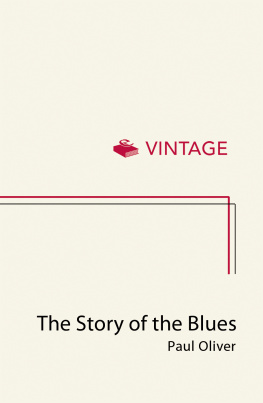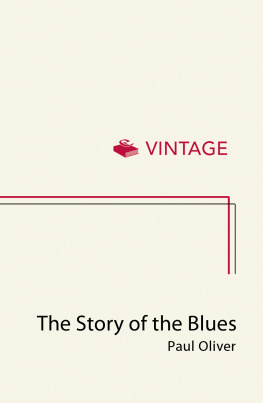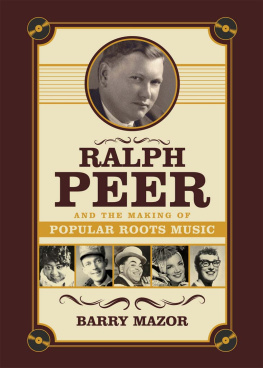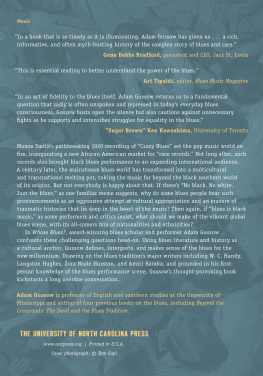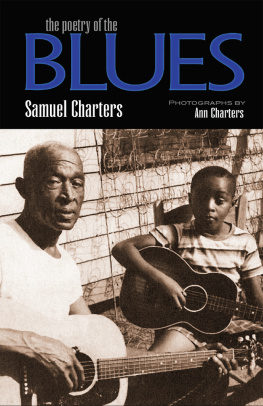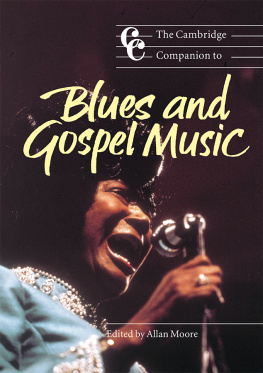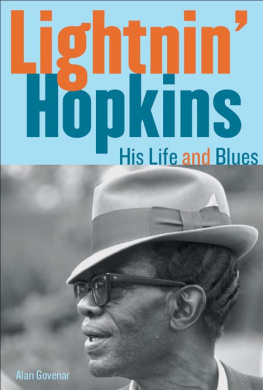Contents
Long Hot Summer Days
The background of Afro-American music in the meeting of cultures after the Civil War
Cottonfield Hollers
Origins of blues in work songs, field hollers and the ballads of the songsters
Down the Dirt Roads
Traditions of the plantations around the Mississippi Delta and emergent blues techniques
Froggy Bottom to Buckhead
Blues singers of Texas, Alabama and Georgia; development of guitar and piano music
Bed Slats an All
String, washboard and jug bands; Beale Street blues and the medicine show entertainers
Rabbit Foot and Toby Time
Minstrel and tent shows, vaudeville theatre circuits and the women Classic blues singers
Struttin that Thing
Black migrations in the Jazz Era; piano music in the South, in Chicago and Detroit
Walking the Basses
Urban blues and boogie-woogie of St Louis, Indianapolis, Louisville and the Mid-Western cities
Hard Time Everywhere
Blues and the record industry: themes and personalities of the post-Depression years
Chicago Breakdown
Blues bands of Chicagos South and West Sides in the thirties and forties
Back to Mississippi
The continuity of the rural blues tradition in Mississippi before the Second World War
Travelin Men
Guitar rags and harmonica breakdowns in the Eastern States, the Carolinas and Tennessee
The Number One Scab
Barrelhouse piano; the effects of recording; Kansas City blues and the migration to the West Coast
King Biscuit Time
Blues on the radio networks; post-war blues centres of the South and the urban North
Blues and Trouble
Rhythm and blues; the rise of modern styles; blues and the international audience
About the Book
The influence of the Blues on popular mainstream music is immense. Its fascinating history reaches back to the end of the nineteenth century, its roots in the work songs of slavery, the ballads and country music of black Americans. Paul Oliver places singers like Blind Lemon Jefferson, Bessie Smith, Muddy Waters and Lightnin Hopkins firmly in the context of their surroundings. He considers every facet of the Blues, its themes and subjects, the impact of recording, its far-reaching legacy. This is not simply the history of a music but a reflection of the tumult with American society.
About the Author
Paul Oliver is a leading writer on the blues. He has contributed to various magazines, written sleeve notes for record companies, broadcast in Britain, the United States and Ghana and appeared on television. His other books include Blues Fell This Morning, Savannah Syncopators, Conversation with the Blues, and Songsters and Saints. His book Dunroamin: The Suburban Semi and Its Enemies, co-written with Ian Davis and Ian Bentley, is also published by Pimlico. He is a Doctor of Arts, a Fellow of the Royal Anthropological Institution, and of Oxford Brookes University.

Picture Credits
The page references in this listing correspond to the printed edition from which this eBook was created. For further information on the illustrations in this book, please contact the publisher.
For the loan of their photographs, the majority of which were included in the first edition, I am greatly indebted to the following: Lawrence Cohn (1.11t, 1.15b); Jacques Demetre (3.8t, 3.14bl, 4.4tr, 4.6tl, 4.8t); David Evans (1.13tl); Farm Security Administration, Library of Congress (1.9t, 1.9b, 1.11b, 2.2b, 2.3t, 2.9b, 3.8b, 3.9, 3.10t, 3.13t); the late Langston Hughes (3.11tl); Library of Congress collection (1.5t, 1.6b, 1.9c, 1.10t, 1.10b); George Mitchell (1.8b, 1.16t, 4.11tr); New York Public Library (1.1b, 2.9t); Valerie Oliver (4.12t); Harold Oster (2.2c); The late Bill Russell (2.2t, 3.11tr); Chris Strachwitz, Arhoolie Records (4.11tl, 4.14b); University of North Carolina Press, Chapel Hill (1.3tl, 1.3tr).
All other photographs, illustrations, including ephemera, publicity photographs, record labels, record catalogs and historic photographs are from the Paul Oliver collection. The original maps from data selected for this work are reproduced.
All illustrations come from the sources as listed and are the owners and/or photographers copyright. Every attempt has been made to trace copyrights but in many instances of historic and publicity photographs the photographers are not known. If any photographs are in copyright and this has not been ascertained I wish to extend my apologies.
Music transcriptions done by Donald Kincaid are printed in their original form, with my sincere thanks.
As for the text, a number of minor adjustments have been made. These are mainly biographical, reflecting the emphasis of research in the past quarter-century. For this edition I owe a special debt of gratitude to Alan Balfour who has advised me on biographical data and has assisted with corrections to transcriptions. I have also taken his advice that the emphasis and thrust of the book should remain as it was originally conceived.
This ebook is copyright material and must not be copied, reproduced, transferred, distributed, leased, licensed or publicly performed or used in any way except as specifically permitted in writing by the publishers, as allowed under the terms and conditions under which it was purchased or as strictly permitted by applicable copyright law. Any unauthorized distribution or use of this text may be a direct infringement of the authors and publishers rights and those responsible may be liable in law accordingly.
Version 1.0
Epub ISBN 9781473523418
www.randomhouse.co.uk
PIMLICO
An imprint of Random House
20 Vauxhall Bridge Road,
London SW1V 2SA
Pimlico is part of the Penguin Random House group of companies, whose addresses can be found at: global.penguinrandomhouse.com.
Random House UK Ltd Reg. No. 954009
First published by Barrie & Rockliff, The Cresset Press 1969
Pimlico edition, with revisions, 1997
3 5 7 9 10 8 6 4
Paul Oliver 1969, 1997
For copyright of photographs see
ISBN 9780712674928
Acknowledgements
In 1964 I was invited by Francis Mason of the United States Information Service to prepare an Exhibition entitled The Story of the Blues which occupied the ground floor of the American Embassy in September that year. Well over 500 photographs and reproductions were displayed and these became the basis of the book of the same title, published by Barrie and Jenkins five years later. In the ensuing three decades literally thousands of photographs of blues artists have been published in books and magazines.
As the first comprehensive history of the subject it seemed necessary to place blues in its cultural context; now, after the passing of so many years and with the original milieu of the blues forgotten, simplified or largely unknown to many enthusiasts of its later forms and influences, it seems desirable to do so again. The illustrations have been reduced and selected with a view to showing as far as possible the background of blues as an African American music and how blues singers were seen in performance or presented by the record industry to a larger black audience. The period of discovery (or rediscovery) of the blues, its singers and players is also represented, though the subsequent development of the blues as an international popular music is not.
Next page
